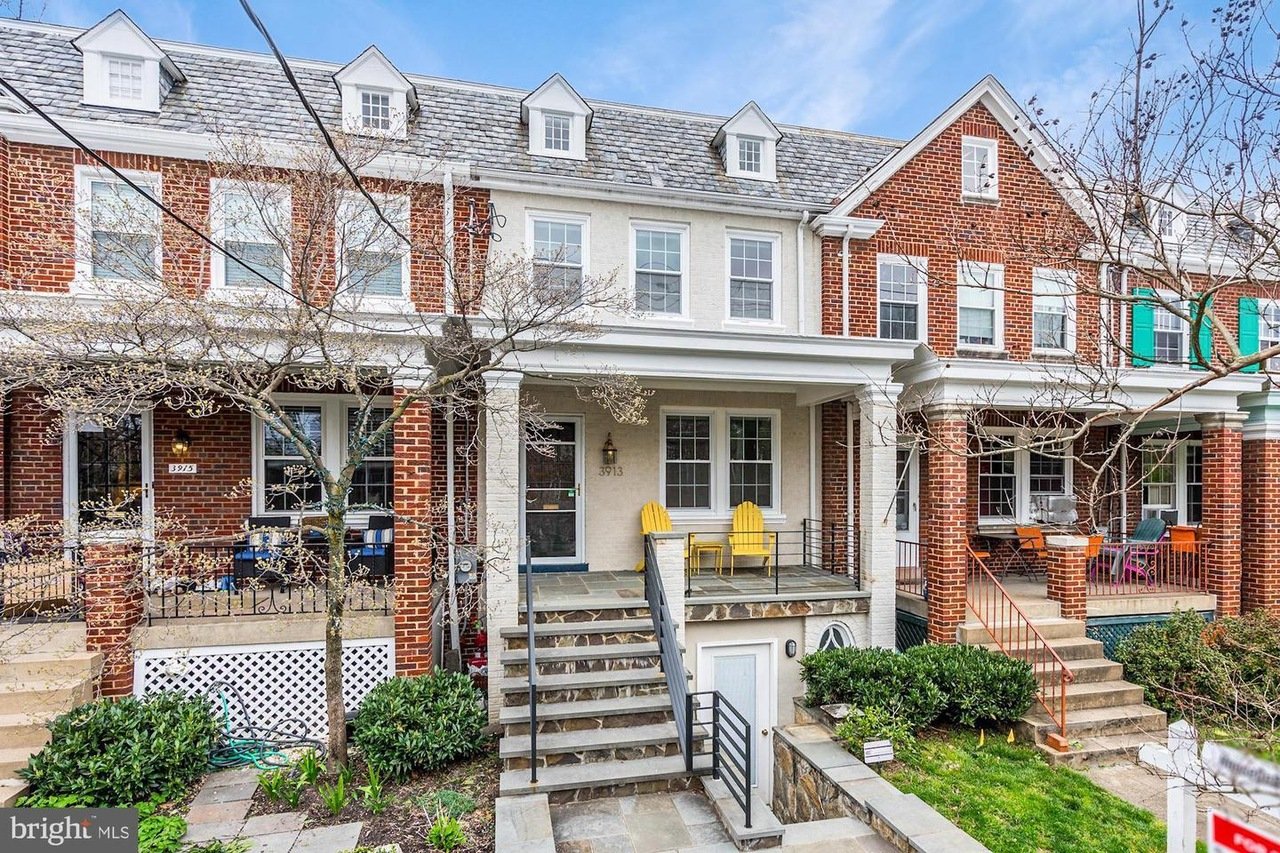Photograph by Ron Blunt.
Walk into David Neumann’s Capitol Hill rowhouse and you’ll be hard pressed to imagine it as he first saw it, before it was renovated.
“It had chocolate-brown plastic laminate countertops, every room had been wallpapered—and it was a repository for bad chandeliers,” he says. “But I wanted something livable that had not been renovated recently so that I could renovate it to my own taste. This was a good candidate.”
Neumann, who specializes in building new homes with traditional character, bought the 1887 Victorian in 1995 and lived in it for nearly eight years before doing any significant work on it.
“I thought I would do the renovations piecemeal but discovered it required a lot of major work,” he says. “So I decided to move out and do it all at one time rather than separate it into a series of projects that would have been hell living through.”
Nine months later Neumann moved back into a gem returned—if not exactly restored—to its historic glory. He admits he took license with some features, like using a more Georgian style for the window and door trims rather than the ornate Victorian design that would have been original to the house. “I had to have hundreds of feet of moldings and preferred to have them in my own taste,” he says. “An architectural historian would say, ‘Clearly these are new trims,’ but I think most people would think this was here.”
Neumann put back most of the original walls, but he moved and enlarged doorways to create more openness and connect areas such as the living and dining rooms. He added a private bath to the master bedroom, which incorporated space that was once a trunk, or storage, room.
The biggest aesthetic departure is the kitchen’s red-speckled linoleum, or Marmoleum, which he got at DC’s Classic Floor Designs. Neumann chose the linoleum as a cost-cutting measure—he’d added a “luxury” hot-water floor-heating system in the room—and, though more authentic, wood wasn’t as practical in a kitchen.
“Linoleum is just about as cheap as you can get, and it’s indestructible; all you do is wash it. It never looks spiffy, but it always looks fine,” he says.
Because he was departing from the kitchen’s original look, he figured he’d go all the way. “It’s a shocking bit of color,” he says of the retro ’50s-style linoleum, which coordinates with the Wolf range and Sub-Zero refrigerator as well as with the understated colors and textures in the rest of the room.
He used honed-granite countertops for a more antique look than the polished stone used in most new kitchens. Unfortunately, Neumann says, it smears easily: “You can’t just clean a corner when you clean it. You have to clean it from start to finish. It’s my wife’s least favorite choice in the house.”
The home’s only unfinished area is the basement. “We need to do a rec-room sort of thing down there because there’s a baby on the way,” says Neumann. He and his wife are adopting an infant this spring, their first child, and “this isn’t necessarily the most child-friendly house.”
Expert Tip
To speed up a project, make decisions in advance, says David Neumann. “Don’t wait until the last possible moment to choose some fixture. It’s difficult sometimes for people to visualize, and they want to wait to see how something fits. But sometimes delivery can be a lot longer than you think, and that can hold everything else up.”
Select Resources
Fireplace mantel: a reproduction of an antique; around $3,500 from Chesney’s, chesneys.co.uk. The company is based in the United Kingdom, but there’s a showroom at Working Wonders, 1421 Clarkview Rd., Suite 124, Mount Washington, Md.; 410-828-0113; workingwondersus.com.
This article is part of the 2008 Great Home Design package. To see the rest of the package, click here.


















